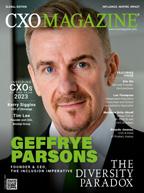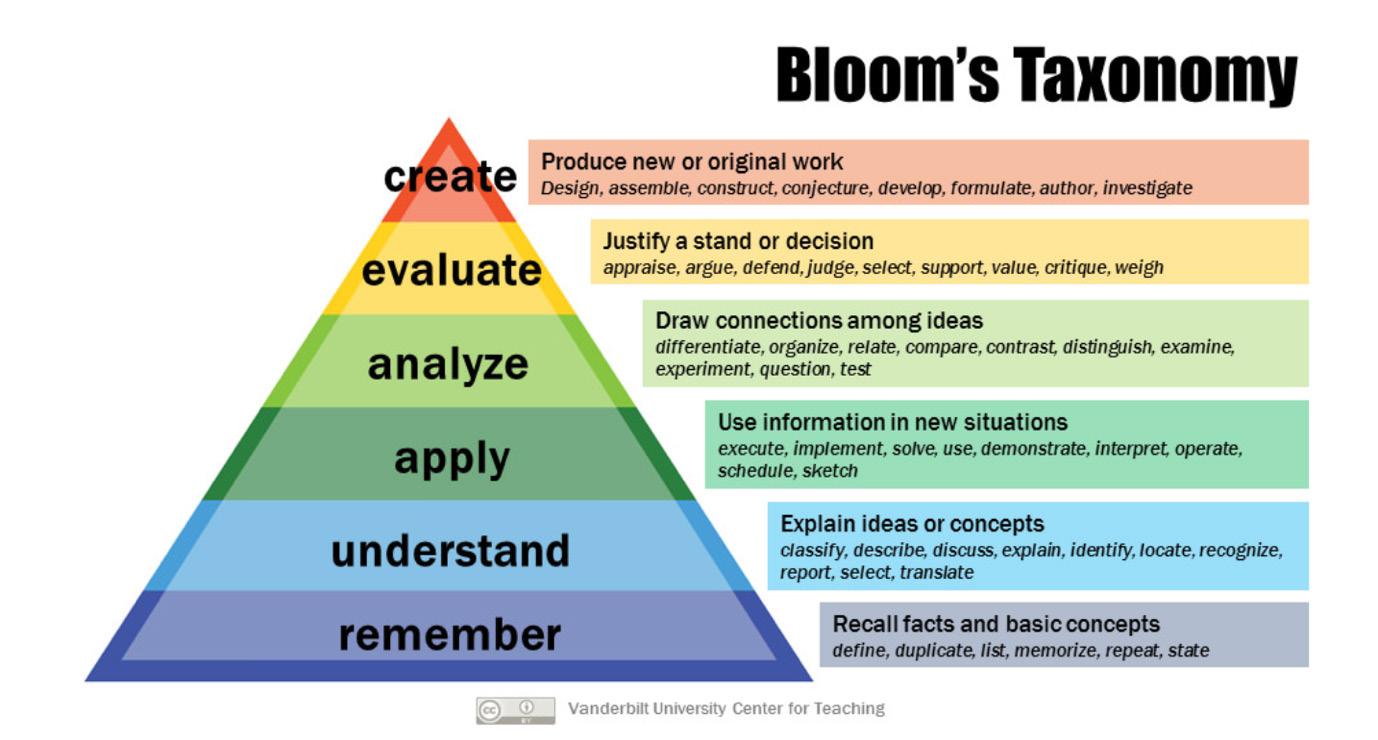




Managing Editor
Consultant Editors

Sarath Shyam
September 2023 Vol - 1 Issue - 7 Americas

Dr. John Andrews
Emma James
Sabrina Samson
Naomi Wilson
Andrew Scott
Kwith Alexander
Editorial Enquiry: admin@cxoomagazine.com
Art & Design
Charlie Jameson
Branding & Marketing Partnership

International Representation
16192 Coastal Highway, Lewes, DE 19958, USA
Europe
27, Old Gloucester Street, London, WC1N 3AX, UK

Middle East & Africa
P.O. Box 48299, Dubai Silicon Oasis, Dubai, UAE
Free Subscription
Jennifer Anderson
Monica Davis
Rachel Roy Anna Elza
Sales Enquiry: admin@cxoomagazine.com
Louis Bernard Shirley David www.cxomagazine.com
Asia-Pacific Ramanashree Arcade, 18 MG Road, Bangalore, India
CXO Magazine is a digital magazine published by Connecta Innovation Private Limited. All rights reserved. The opinions expressed in the content and pictures provided are those of the authors. They do not purport to reflect the opinions or views of the Connecta Innovation Private Limited or any of its members and we do not assume any responsibility. The publisher does not assume any responsibility for the advertisements, its content, pictures, and all representation of warranties made in such advertisements are those of the advertisers and not of the publisher. CXO Magazine is a Free Subscription digital magazine strictly not for sale and has to be strictly for internal private use only. Publisher does not assume any responsibility arising out of anyone printing copy of this digital magazine in any format and in any country and all matters related to that.

In the ever-changing world of business leadership, there is a movement that is changing the way companies operate. This movement is centred around the idea that diversity and inclusion are essential in the workplace. But why is this so important? The answer is complex and meaningful. It's not just about meeting requirements or following societal expectations, it's about creating an environment where everyone's ideas and contributions are valued and celebrated.
The significance of this goes beyond platitudes. Diverse teams bring diverse experiences, backgrounds, and perspectives to the table. In this rich tapestry, innovation finds its fertile ground. Fresh ideas spring forth when individuals with unique vantage points come together, challenging the status quo and propelling organizations to new heights.
Leaders, as the guiding stars of these organizations, hold the responsibility of cultivating this environment. It's not enough to pay lip service to diversity and inclusion; true leaders understand that respecting the unique needs, perspectives, and potential of their diverse workforce is the key to unlocking unparalleled success.

To this end, we embark on a journey through the pages of this special issue of CXO Magazine. Within these pages, you will encounter the stories of modern-day business leaders who have taken it upon themselves to champion diversity and inclusion. They are the trailblazers, the visionaries, and the change-makers who inspire not just their teams but leaders around the world.
On the cover, we feature Geffrye Parsons, Founder & CEO of The Inclusion Imperative. Through his DE&I consultancy practice, The Inclusion Imperative, Geffrye helps commercial organizations build leadership capabilities and harness the power of inclusion as a key strategy for well-being, organizational learning, and superior business outcomes.
In the following features, we delve into their experiences, challenges, and triumphs. We explore the innovative strategies they employ, the compassionate leadership they exhibit, and the remarkable impact they have on their organizations and industries. These inspiring CXOs are the embodiment of progress, proving that success is not a solitary pursuit but a collective journey enriched by the diverse tapestry of humanity. Enjoy Reading.
Sarath ShyamFounder & CEO, The Inclusion Imperative



16 Marianne Brits-Strodl, Group COO at BI: PROCSI and CEO at Dataru

The Transformative Power of AI, Predictive Analytics, and ML in Modern Business Processes

Achieving Your Net-zero Commitment is Impossible Without Dealing with Your Digital and Technology
52 Leo Thompson, Independent Education Consultant and School Accreditation Specialist
Learning: K to 1OO!
The Golden Age of Solopreneurs




Through his DE&I consultancy practice, The Inclusion Imperative, Geffrye helps commercial organisations to build leadership capabilities and harness the power of inclusion as a key strategy for well-being, organisational learning, and superior business outcomes. Widely regarded as a thought leader and driver of positive change for workplace inclusion, Geff promotes a holistic, intersectional approach. He challenges received wisdom and practices to facilitate a culture shift and encourage business learning, drawing on 35 years of experience in front office executive roles, based in the UK, Hong Kong, Singapore, and the Netherlands, with leading international financial and professional services organisations. Geff is a respected writer, speaker, and facilitator, having worked with organisations in the fields of financial services, media, energy, law, advertising, publishing, logistics, government agencies, and others, spoken at multiple conferences globally, hosted a regular podcast series, and provided published content for multiple publications and online channels.
L“ook, we have women and people of colour in our organisation – we are so diverse!”
We have all heard something like this, haven’t we? An organisation portrays itself as diverse by promoting visible representation. Some women in senior management? Check. Photos of a few people of

minority ethnicity in the annual report? Done. A rainbow logo for Pride Month? Oh yes.
But if that is where it all stops, this is mere optics: what I call “optical inclusion” (see what I did there…?).
The pity is, that many organisations which are guilty of optical inclusion may genuinely believe that they are doing this right. They have probably read some statistics demonstrating that
diverse teams outperform homogeneous teams, and so rush headlong into a hiring spree targeted at people with (predominantly visible) minority characteristics, believing that will create the magic elixir they seek.
But there is a fundamental problem. Diversity and inclusion are NOT the same thing. Whereas diversity is about representation (a physical body count, if you will), inclusion is what unlocks the potential value of that diversity. It is the ‘secret sauce’ behind those statistics that the company read and hoped to re-create with its recruitment campaign.
But not only are diversity and inclusion different; there is a paradoxical effect. That is, very disappointingly for organisations that have
adopted the tactic I described above, diversity does NOT create inclusion. Instead, the opposite is true: inclusion creates diversity.
How so?
Put simply, diversity without inclusion is a recipe for (self) deception and dissonance. Not only does it mislead key players (such as the C-suite) within the organisation into believing that they are doing all they can or should be doing in order to foster an environment in which everyone can thrive and create value-added synergies. It also fails the ‘team test’: forcing together a bunch of disparate individuals, not managed in a way that would help them not only get past but actually make the most of their differences, but rather in all probability leaving them fundamentally
Diversity and inclusion are NOT the same thing. Whereas diversity is about representation (a physical body count, if you will), inclusion is what unlocks the potential value of that diversity
unable to relate to or communicate meaningfully with each other. More often than not, this produces an effect worse than falling back on homogeneity.

In other words, diversity without inclusion invariably spawns a ‘diversity deficit’ – more harm than good is done by it.
Contrarily, fostering an inclusive environment will naturally attract and stimulate diversity – of thought, perspective, and lived experience. A workplace in which participants are genuinely and empathetically valued, where they can exercise agency to bring authenticity to the table, where psychological safety allows players to challenge the status quo, question received wisdom, and take reasonable risks without fear of retribution, in which vulnerability is appreciated and where learning is a ‘team sport’ –this is an environment founded on respect and, above all, trust.
Such an environment allows ideas and initiatives to crosspollinate, encouraging and facilitating diverse players and perspectives to synergise for the greater good. In other words, inclusion creates (not to mention attracts and retains) diversity – and results in what has been called a ‘diversity dividend’: a pay-off from fostering a nurturing environment.
The analogy of a plant is useful (and used often) in this context. In the right environment, a plant will grow and thrive; in a toxic one, it will wither and die. This is what happens to diversity when it is introduced to a workplace – its success depends on creating an environment in which it can thrive.
So what should organisations do? There are very many things, of course, but for now let us focus on two key ones: hiring and leading.
Hiring is an inevitability, as no organisation is static. But this process of corporate renewal requires a delicate balance to be struck: newcomers need to be assimilated into the team or organisational culture, but not so rigidly as to stifle the stimulus which they offer as a new resource.
Companies that hire for optics find that those optical benefits are not only very temporary and unsustainable (because talent will not stay where it is not included), but also quite destructive, as we have already seen. Companies that hire purely for assimilation, allowing affinity bias to create clones of themselves, are risking groupthink, stagnancy, and ultimately market irrelevance.
By contrast, hiring for ‘stretch’ rather than ‘fit’, offers the opportunity to develop team culture positively, without losing the essence of its core identity.
I refer to this type of hiring as ‘highering’. And whereas optical or assimilative hiring can be miring, highering can be inspiring – it provides developmental stimulus and upward renewal for the team and the broader organisation.
But, of course, only if those new recruits are in a position to thrive rather than just survive. As we saw earlier, this requires an inclusive workplace environment. Critical to this are the leaders – and especially (and perhaps contrary to popular perception, which tends to focus mainly on the C-suite), the immediate leaders, i.e. the line managers, department
Hiring is an inevitability, as no organisation is static. But this process of corporate renewal requires a delicate balance to be struck: newcomers need to be assimilated into the team or organisational culture, but not so rigidly as to stifle the stimulus which they offer as a new resource
heads and team leads. Regardless of the wider situation, and principled messaging trickling down from executive management, these are the leaders who will make or break the situation because they create the micro-climates in which their team members work daily.
A well-known mantra is that people do not leave organisations, they leave managers. That can
happen when a manager fails to grasp the principle espoused by Simon Sinek when he said: “The real job of a leader is not about being in charge, it’s about taking care of those in our charge.”
The role of a successful leader is to create a nurturing environment in which trust is core and ever-present. The likes of Peter Drucker and Robert Greenleaf have observed that authoritarian leaders – those who derive their power from title rather than influence – never extract the maximum possible discretionary effort and loyalty from those who report to them. This is because this approach creates the very antithesis of the psychologically safe environment in which talent can (or even wants to) flourish.
Instead, leaders should be what Liz Wiseman and Greg McKeown have called “multipliers”, using their skills and position to bring out the best in their teams. This approach, often called “servant leadership”, is designed to empower individuals, allowing them to experiment and synergize to create a team that is much more than the sum of its parts. Leaders like this measure their own success by the success of the teams that they lead – which in turn reflects back on them, of course. So, by fostering the right (i.e. inclusive) environment for diversity to thrive, leaders like this become a catalyst for real progress.
So, by understanding the paradox of diversity, and hiring and leading inclusively, organisations can leap over the trap door of optical inclusion. Doing so will allow them to mine diversity fully for the priceless, sustainable potential it offers – getting the best out of, and engendering the loyalty of, their staff, and in so doing encouraging the creativity, innovation, and risk-awareness which are the lifeblood of a robust, future-proofed organisation.
By understanding the paradox of diversity, and hiring and leading inclusively, organisations can leap over the trap door of optical inclusion

Marianne Brits-Strodl is the Group Chief Operating Officer (COO) of BIPROCSI, a technology consultancy specialising in data solutions, and her understanding of cutting-edge technologies is further exemplified by her role as CEO of a sister company, Dataru, leading the way in developing a groundbreaking SaaS platform driven by ML and AI. Marianne is recognised for her operational expertise, excelling in cost reduction, enhancing flexibility, and delivering outstanding value in demanding environments. She implements agile strategies and fosters a culture of adaptability, enabling organisations to swiftly respond to shifting market demands and dynamic business landscapes. With an unwavering commitment to operational excellence, Marianne empowers teams and cultivates a positive culture that unlocks the full potential of individuals.
 Marianne Brits-Strodl
Marianne Brits-Strodl
The growing awareness surrounding AI has caused organisations to fear its potential impact on their future. However, it is imperative for the C-suite to acknowledge that AI should not be regarded with trepidation only but instead as a transformative force capable of

propelling organisations to unprecedented success. Companies that embrace AI and incorporate it into their strategies will gain a competitive advantage, while those that resist its adoption risk being left behind.
As the Group Chief Operating Officer (COO) of BIPROCSI, a technology consultancy specialising
in data solutions, and CEO of Dataru, a pioneering SaaS platform driven by ML and AI, I am privileged to lead the way in utilising cutting-edge technologies to enhance business processes. I have witnessed firsthand the transformative effects of these technologies on operational efficiency, cost reduction, and overall business success.

Data is the lifeblood of any organisation, and the volume of data being generated today is unprecedented. AI, predictive analytics, and ML (*machine learning) enable us to extract meaningful insights from this data, empowering us to make informed decisions and drive business success. By leveraging these technologies, we can efficiently collect, process, and analyse vast amounts of data, transforming it into actionable intelligence.
With AI and ML algorithms, businesses can uncover patterns, trends, and correlations that would be difficult or impossible to identify manually. This allows for more accurate predictions, better understanding of customer behavior, and improved decisionmaking. Companies can use AI-powered tools to perform sentiment analysis, customer segmentation, demand forecasting, and market trend analysis, among many other applications. The ability to harness the power of data through AI and ML is a game-changer in the modern business landscape. To explain further, I'll share some advantageous and specific business use cases within some of the biggest industries.
One of the key advantages of AI and ML is their ability to automate repetitive and timeconsuming tasks. We can streamline business processes, reduce manual errors, and enhance operational efficiency by implementing intelligent systems. From automating customer support through chatbots to optimising supply chain management and inventory forecasting, AI-driven solutions enable us to allocate resources effectively, maximise productivity,
With AI and ML algorithms, businesses can uncover patterns, trends, and correlations that would be difficult or impossible to identify manually
and focus on strategic initiatives. AI-powered automation can revolutionise various aspects of business operations.
Use Case: Enhancing Operational Efficiency in the E-commerce Industry with AI-Driven Automation and Analytics Industry: E-commerce
● Problem Statement: Company XYZ is an e-commerce business and is grappling with manual and time-consuming processes, resulting in operational inefficiencies and challenges in scaling their business. The company aims to enhance operational efficiency by leveraging AI and ML technologies to automate tasks, optimise processes, and gain valuable insights for datadriven decision-making.
● Solution: Personalised Customer Experience. The organisation developed a recommendation engine that can analyse
customer behaviour, purchase history, and browsing patterns to provide personalised product recommendations. This improved the customer experience, increased conversion rates, and enhanced operational efficiency by reducing manual product searches.
● Inventory Management and Order Fulfilment: The company used ML algorithms to forecast demand and optimise inventory levels. By automating the replenishment process and ensuring the availability of popular products, the company reduced stockouts and overstocking, which led to improved customer satisfaction and cost savings.
● Automated Order Processing: Company X implemented AI-powered processes and tools to automate order processing, from order verification to shipping label generation. This eliminates the need for manual intervention, reduces errors, and speeds up the order fulfillment process.
AI analytics tools collect and analyse data from various operational processes, identifying bottlenecks, inefficiencies, and opportunities for improvement
● Customer Support and Chatbots: Company X utilised AI-powered chatbots and virtual assistants to automate customer support processes. Chatbots can handle routine customer inquiries, provide order updates, and assist with basic troubleshooting. This reduced the workload on customer support teams, improved response times, and ensured consistent and efficient customer service.
By implementing AI-driven automation and analytics solutions, the e-commerce company achieved significant improvements in operational efficiency and scalability. They experienced a 30% reduction in manual effort, a 20% increase in order fulfillment speed, and a 15% decrease in customer complaints. The enhanced operational efficiency enabled the company to scale its business and achieve sustainable growth.
AI analytics tools collect and analyse data from various operational processes, identifying bottlenecks, inefficiencies, and opportunities for improvement. Real-time dashboards and reports provide actionable insights to management, enabling them to make data-driven decisions and continuously optimise operations. By monitoring key performance indicators (KPIs) in real-time, businesses can identify areas of improvement, track progress, and ensure that they are on the path to achieving their goals.
AI and ML have significantly enhanced operational visibility and data-driven decision-
making, leading to continuous process improvement in various industries. It empowers organisations with enhanced operational visibility, enabling data-driven decisionmaking and continuous process improvement. These technologies provide valuable insights, facilitate automation, optimise resource allocation, and drive efficiencies across various operational domains, ultimately leading to improved business outcomes. It has significantly enhanced operational visibility and data-driven decision-making, leading to continuous process improvement in various industries.
Company: XYZ Gaming and Betting
● Problem Statement: As a leading player in the dynamic and competitive gaming and betting industry, XYZ Gaming and Betting understand the importance of making informed decisions to maximise revenue and stay ahead of the competition. However, traditional data analysis and decision-making approaches have proven inadequate in meeting the industry's evolving demands. To address this challenge, XYZ Gaming and Betting sought a solution that leveraged AI and ML to provide data-driven insights, enabling the company to make strategic choices, assess risks, optimise processes, and adapt to changing market dynamics.
● Solution (Real-time Data Analysis): XYZ Gaming and Betting implemented algorithms to analyse real-time data from multiple sources, including player behavior, game performance, and market trends. By processing and interpreting this vast amount of
data, the company gained valuable insights into player preferences, emerging trends, and other crucial factors.
● Predictive Modeling: To enhance its decision-making capabilities, XYZ Gaming and Betting developed sophisticated predictive models using ML techniques. By analysing historical data and incorporating external factors like sports events or market conditions, the company was able to forecast player behavior, game performance, and revenue outcomes. This enabled them to anticipate player demand, optimise game schedules, and adjust betting odds for maximum profitability.
● Risk Assessment and Fraud Detection: XYZ Gaming and Betting employed AI algorithms to assess risks and detect fraudulent activities within the industry. ML models were trained to analyse patterns, transaction data, and player behaviour, enabling the company to identify potential fraudulent activities or irregularities. This proactive approach helped minimise financial losses, ensured fair play, and maintained the integrity of the company's operations, building trust among players and safeguarding its reputation.
● Personalisation and Player Engagement: By leveraging AI and ML, XYZ Gaming and Betting personalised player experiences and enhanced player engagement. Through the analysis of player data, such as preferences, playing patterns, and demographics, the company tailored game recommendations, promotions, and loyalty rewards to individual players. This level of personalisation significantly improved
player satisfaction, increased retention rates, and ultimately drove revenue growth.
● Process Optimisation: XYZ Gaming and Betting harnessed the power of AI and ML to optimise its operational processes. By analysing data from various operational aspects, including customer support, payment processing, and game performance, the company identified bottlenecks, streamlined processes, and improved overall operational efficiency. This resulted in faster response times, enhanced customer experiences, and cost savings for the organisation.
In a world driven by data, AI, predictive analytics, and ML hold the key to unlocking unlimited opportunities for businesses. Embracing these transformative technologies is no longer a choice but a necessity for companies that aspire to thrive in the modern landscape.
By harnessing the power of data, enhancing operational efficiency, and making data-driven decisions, organisations can gain a competitive edge and secure a brighter future. The time for hesitation and resistance has passed. It's time to embrace the AI revolution and unleash its potential in your business. Those who dare to innovate, automate, and optimise with AI will rise above the competition, while those who remain stagnant risk being left behind in a rapidly evolving world.
Remember, the power of AI is not just a buzzword—it's a game-changer. Are you ready to play?




StoneAge, Inc. was established in 1979 and has since become a global leader in the industrial cleaning industry, crafting high-pressure waterblast cleaning tools and innovative robotic equipment. In 2009, the Board of Directors made a bold decision to appoint a young 28-year-old, Kerry Siggins, as CEO, who had joined StoneAge a few years earlier as the Director of Operations. Kerry fondly recalls, "I quickly learned how to adapt my leadership style to effectively guide a team of brilliant individuals who possessed far more expertise than I did. As a relatively young leader, especially in my role, I had a lot to discover—not just about our products and the industry, but also about the art of managing and inspiring people."
Navigating the intricacies of leadership and motivation demands exceptional skills. Kerry shares, "Honestly, I made my fair share of
mistakes in my early days, and I continue to learn from the challenges I face today." Despite the hurdles, Kerry's leadership has propelled StoneAge into establishing a robust global presence, leading to remarkable double-digit growth year after year.
In 2023, Kerry earned recognition as one of EY’s Entrepreneur of the Year. Her exceptional leadership also landed her a spot as a finalist for Colorado's CEO of the Year in 2017. Today, she not only guides StoneAge but also serves on multiple other boards, bringing her valuable insights to diverse arenas. As a member of YPO (Young Presidents' Organization), she plays an active role on the executive committee of the Business Networks Council.
StoneAge has a fascinating history that began in Durango, Colorado. The company started by

creating a unique water jet drill for uranium mining, making explosives work safer. But soon after, StoneAge made a smart decision to switch gears and focus on industrial cleaning, which has led it to become a global leader in the industry. Today, the company offers a wide range of resources, cutting-edge technology, and automated equipment to customers in 50 countries. Reflecting on this journey, Kerry shares, "StoneAge is a company known for its ability to pivot, and during my tenure, we've undergone significant transformations. We've redefined our business model by developing robotic solutions and venturing into the global market."
StoneAge is currently rolling out a revolutionary digital customer experience platform poised to reshape industry norms. Leading this charge is their latest innovation, Sentinel Automation Technology™, which generates invaluable data for customers to fine-tune heat exchanger cleaning, enhancing precision and quality. Furthermore, StoneAge has expanded its reach through strategic acquisitions, most notably Medium One, an Internet of Things (IoT) cloud platform software. This addition strengthens Breadware, StoneAge's wholly-owned subsidiary, dedicated to end-to-end IoT product development.

Kerry's philosophy underscores StoneAge’s success, "Our ascent to becoming the world leader in waterblast tooling and automated solutions is deeply rooted in our identity and values." Guided by the visionary founders and the unwavering commitment of its employee-owners, StoneAge leaves an indelible mark on the lives of its workforce, customers, and local communities. Kerry emphasizes, "By remaining steadfast to our core values—creating meaningful jobs, nurturing a constructive culture, engineering top-tier products and services, and delivering an unparalleled customer experience—we've not only cultivated our corporate culture but also fostered customer loyalty and enduring business prosperity."
StoneAge is more than just a tool-making company. They're problem solvers who are driven by their passion for excellence and dedicated to putting their customers first. The company’s top priority is workplace safety, and it is constantly adapting to meet the changing needs of the market. StoneAge is also known for sharing its technical expertise with others in the industry, which helps promote safety, efficiency, and productivity for everyone. Kerry passionately states, "Our mission is to inspire both our employees

StoneAge is a company known for its ability to pivot, and during my tenure, we've undergone significant transformations. We've redefined our business model by developing robotic solutions and venturing into the global market."

and customers to ask, 'Why choose anyone but StoneAge?' This firm focus on our mission makes us the leaders in our industry—a combination of innovative products, exceptional service, and the unyielding resolve of our employee-owners to deliver outcomes that resonate deeply with our customers."
At StoneAge, ownership isn't just a concept; it's a way of life. This culture of ownership has been ingrained in the company since the 1990s, when it became proudly employee owned. Initially, the stock purchase program was implemented




At StoneAge, providing employees with fulfilling jobs and the opportunity to collaborate with extraordinary colleagues while accomplishing meaningful work in the industry is a core tenet
not with succession in mind but as a means for the founders to share the fruits of the company's success with its dedicated team. Over time, an ESOP emerged as the most viable succession solution, as the founders wanted to exit the stage gracefully. Kerry elaborates, "We've fostered an incredible environment where every employee thinks and acts like an owner."
This sense of ownership among StoneAge's employees becomes a powerful catalyst for their customers' success. Kerry explains, "Our industry can't match our culture and how it translates into customer satisfaction. It's a source of immense pride and gratitude when our customers visit us at our Durango, Colorado headquarters and exclaim, 'I've never seen such content and proud employees. Can I join the team?' We distinguish ourselves through a rare blend of top-notch, user-friendly products, exceptional customer service, and a cadre
of brilliant, dedicated employees." Kerry is deeply passionate about what she terms "The Ownership Mindset." It's about fostering growth, self-awareness, accountability, enhanced communication skills, and taking full responsibility for every aspect of life, even the challenges.
At StoneAge, providing employees with fulfilling jobs and the opportunity to collaborate with extraordinary colleagues while accomplishing meaningful work in the industry is a core tenet. Kerry states, "As a 100% employee-owned company, we're tasked with conducting ourselves as astute owners. This means merging the challenges and rewards of business acumen with our skills, talents, and knowledge. It also means connecting on a human level as we perform our roles to ensure our company remains a trailblazer in the industry." Anchored in values such as "Be a Great
Teammate," "Practice Self-Leadership," and "Deliver on the StoneAge Assurance Promise," StoneAge's culture empowers employees to grasp how their performance and their personal presence contribute to their success, both in their careers and lives. Kerry adds, "We firmly believe that when our employees fully embrace the 'Own It Mindset,' it will perpetuate StoneAge as a thriving business for generations to come. We all shoulder the responsibility for nurturing our culture, which we take with the utmost seriousness—because we OWN IT!"
StoneAge's ambition reaches beyond the confines of the workplace. The company aims to create 1,000 millionaires through its employee ownership program. This endeavor aims to redefine capitalism's narrative by spreading significant wealth across all levels of the organization, not just at the top. "The path to creating a thousand millionaires lies in our dedication to innovating products and services that enhance our customers' lives. We've got big plans to disrupt our industry, and we are beyond excited for the future," declares Kerry.
Crafting a Workplace of Excellence

StoneAge, led by Kerry, has been recognized as a distinguished member of Outside Magazine's Top 100 Companies to Work For and Inc. Magazine’s Best Places to Work. Kerry believes that this recognition is due to the company's culture of care. She says, "We look out for our employees, and in return, they extend their care to each other, our valued customers, and the fabric of our organization."
Investing substantially in the well-being, happiness, and engagement of its workforce, StoneAge offers an array of perks that reflect its
dedication to employee welfare. The company boasts an on-site gym and a comprehensive wellness program that rewards individuals for maintaining their health.
But it's not just physical well-being that receives attention. Kerry shares, "We've gone
the extra mile by incorporating a life coach into our team, specifically focused on helping employees understand their stress responses and triggers." Such initiatives underscore the company's commitment to addressing the holistic needs of its employees.

Transparency is a cornerstone of StoneAge's culture. In its decision-making processes, the company operates with an open-book policy, treating its employees as trusted adults with a stake in the organization's journey. Kerry highlights, "We embrace the notion of work being fun while simultaneously playing a vital role in sustaining the supply chain. It's this fusion of dedication and enjoyment that defines us."
The strong feeling of pride among the employees of StoneAge can be felt throughout the entire organization and impacts the industry as a whole. Kerry shares, "We have created a culture that is truly exceptional through careful attention to detail, and it is the collective effort of everyone that drives this achievement."
Imagine being a CEO, especially one who's young and relatively new to the role. Leading and inspiring a team to take ownership and thrive is quite challenging. Kerry firmly believes that leaders should prioritize listening to their teams regardless of background. She says, "It's amazing what you can do when you listen carefully to what people tell you and then help them solve problems." Kerry understands that this simple act of attentive listening can be the foundation of trust and stronger team connections.
In Kerry's view, a leader's strength derives from the team they lead. She advocates helping individuals discover where their unique talents and strengths fit within the organization. It's
not just about having great team members; it's about ensuring they're in roles that allow them to shine. Kerry shares, "Once you have the right people on your team, you must ensure they are in the right roles, aligning their talents with their job." This commitment to aligning talents with roles earned Kerry the affectionate title of "Human Engineer" from her team. It reflects her dedication to ensuring that each team member occupies a position where their potential can flourish.
Challenges are integral to leadership, and Kerry doesn't shy away from them. She encourages leaning into the discomfort of uncertainty and making tough decisions. She pinpoints, "The only way through challenges is by taking action." This straightforward approach to facing challenges is symbolic of her leadership style.
Kerry identifies four essential qualities for effective leadership: integrity, authenticity, transparency, and decisiveness. She believes these qualities are the cornerstones of an ownership mindset within an organization. Kerry states, "Great leaders are honest and transparent and make well-thought-out but decisive decisions." These attributes serve as both a guide and an inspiration for her leadership philosophy.
Ultimately, Kerry's leadership isn't about striving for perfection; it's about embodying an ownership mindset and inspiring others to do the same. She aims to create a workplace where everyone feels a strong sense of responsibility for the organization's success. "We've built a remarkable culture, and it takes each of us to do it," concludes Kerry.
Eric is CEO and Founder of GoCodeGreen, a UK-based world-leading ClimateTech company with a mission to help decarbonise the digital world in which we all live. GoCodeGreen is a self-funded, independent ClimateTech business that has built the world's first carbon impact assessments for software and ICT (Information and Communications Technology). GoCodeGreen has already worked with over 25 companies across 5 industry sectors and consistently identified carbon reduction opportunities of up to 45%. GoCodeGreen has been nominated for the Earthshot Prize, in the Fix our Climate category for 2023 and is the winner of the World Green Technology Leader Award. Here, Eric talks about the wonderful opportunity for CXOs to take a leadership position in digital and technology decarbonisation as part of achieving their net-zero commitments.

This matters. If you have committed your organisation to a net-zero target then you will be unable to achieve it without tackling the carbon costs associated with your use of technology.
We live in a digital world. But we also live in a world in crisis. Every business in every sector will use technology in some form to create the amazing products, services, and capabilities they offer to their customers. Every business has a role to play, whether small or big, to contribute toward action. By implication all CXOs are needed to take a leadership position to help drive a change in the

Digital products and services are the bedrock of many businesses, and increasingly for some, the only way of delivering products to customers
way businesses are run, the choices they make, and the culture they build within their organisations.
Fortunately, decarbonising digital is one of the opportunities you can take as a CXO that won’t require radical reform, huge investment, or changes in business practice. And you can start taking action tomorrow. Everywhere we turn we hear talk of SmartCities, Artificial Intelligence, Big Data, and ChatGPT. Technology and digital solutions are here and growing, and the social, educational, health, and business value of technology is now unquestionable. Digital products and services are the bedrock of many businesses, and increasingly for some, the only way of delivering products to customers. But behind the scenes, this growth has a carbon impact that has remained invisible to most of us.
The information and communication technology (ICT) sector is now estimated to account for somewhere between 4 to 6% of global greenhouse gas emissions and is predicted to consume over 20% of global energy by 2030. Research has shown that for some businesses, as much as 29% of their total carbon impact can be related to technology use. A much-quoted comparison that continues to shock is that data centers running the software we so depend on, now have the same carbon impact as the aviation industry.
The recent IPCC synthesis report, the conclusion of its sixth assessment cycle, gave us an updated call to action. The world's leading scientists have once again shown us that we have no time to spare, and that, as António Guterres, the Secretary General of the United Nations, stated we now must do "everything, everywhere, all at once" if we are
to hold to the 1.5° temperature change a set by the Paris agreement. By the time the next IPCC assessment cycle completes it may well be 2030, it is the same timeframe we have to make a difference to avoid reaching the tipping point, the critical threshold that, if crossed, will lead to large and often irreversible changes in the climate system.
Digital decarbonisation needs to be part of that ‘everything’, and we can start to take action ‘everywhere, all at once’.
Digital decarbonisation is the next order of action.
It is true, that decarbonising digitally is the next order of action. After all, by sending an email we aren’t using paper, sorting, and distribution which all have a significant carbon impact. But it is also true that the volume of emails and the energy usage of the underlying technical infrastructure are barely considered before we hit the ‘send’ button. We now send over 340 billion emails every day, so it all very quickly adds up to a lot of technology using energy that creates a lot of carbon. Similarly, it is not obvious that the act of streaming a viral song when aggregated across millions of listeners over every continent could result in energy usage the equivalent of over 4,000 tonnes of carbon dioxide. We would need to plant 200,000 trees to sequester that amount of carbon. We must find ways of driving more efficient use of technology and that starts with efficient software.
A wonderful leadership opportunity.
If you are a CXO of a business that is dependent on or creates products that are digitally dependent, then you have a wonderful
opportunity. The ability to make software and digital products more energy efficient is within the reach of your teams, and they don’t need to wait for any new technologies or manufacturing of new industrial solutions to make it happen. Your action can start tomorrow with a simple first step.
now have the measurement tools to be able to do this right across the different dimensions of your technology usage according to the guidelines set by the Greenhouse Gas Protocol. Selecting an independent measurement capability brings credibility and avoids the risk of greenwashing and will also position your organisation for upcoming reporting regulations and standards that will necessitate a deeper understanding of the carbon impact of your use of ICT.
Great leadership is about choosing to do the right things and making the decisions, interventions, prioritisation calls, and taking action at the right time to effect positive change. If you were to do one thing differently tomorrow? Show your optimism to your people, and tomorrow, sponsor an initiative that starts the process of measuring the carbon impact of your technology and digital products and services. Once you have the power of data you can empower your technologists and apply the right pressure on your ICT-related supply chain. You will be creating the environment for action and that will be one of the most powerful things that you can do. Then trust that your people will embrace your vision and create the plan to make change happen.
As all CXOs know, it’s hard to change and improve things if you can’t measure them. It is also incredibly important that we know how good a job we are doing, and when we are dealing with action to help alleviate the impact of climate change then that is more true than ever. So the starting point is the measurement, and the good news is that we
In our digital world, we must move forward, our actions be progressive and able to utilise the advancements in technology to create the efficiencies needed to support the growth of your business and to meet customer needs. But we must recognise that we can only meet the need for more technology if we base this growth on a more sustainable IT sector. To achieve this we all need to play our part in building a lowercarbon digital future.
Great leadership is about choosing to do the right things and making the decisions, interventions, prioritisation calls, and taking action at the right time to effect positive change



Tim Lee is the Founder and CEO of Bookipi Group, which primarily includes Bookipi, Payroller and Bookipay. He embarked on his entrepreneurial journey in 2009 as the owner of Goodman Tiling Professional Pty Ltd, a building and construction company in Sydney with over 10 employees. Subsequently, he ventured into establishing companies such as Private Forex Trader, Bisica, and Trady Bunch, unfortunately without the desired outcomes. Undeterred by setbacks, Tim's unwavering entrepreneurial spirit led him to establish Bookipi Invoice App in 2018, a comprehensive invoice maker and organizer software designed to aid small business owners. This innovative tool facilitates invoice creation, transmission, and tracking while enabling efficient receipt management.
Since its inception, the Bookipi Invoice App has evolved into a thriving community
comprising more than 800,000 business owners across 179 countries. This remarkable platform has contributed to generating over $9.3 billion in annualized invoices. In 2019, Tim extended his entrepreneurial pursuits by introducing Payroller, a complimentary Single Touch Payroll (STP)--compliant payroll software tailored to the needs of Australian small businesses.
Although Tim faced a series of startup failures before creating the Bookipi Invoice App, his journey culminated in him emerging as a triumphant business leader. His recipe for success comprises a positive mindset, unwavering resilience, a penchant for calculated risks, the ability to navigate through adversity, an inherent restlessness, and a profound sense of purpose. His journey is a source of inspiration to countless individuals aspiring to tread the entrepreneurial path.
Tim was born and raised in South Korea. Coming from a humble background, his parents instilled strong values, beliefs, and ethics in him. Therefore, from a young age, he was driven and proactively sought out ways to build a successful future. At the age of 22,
after finishing his military service, Tim headed to Australia with $ 1,000 and a flight ticket to pursue his dreams. Ironically, when he heard that actuarial studies were considered one of the toughest courses, it sparked a strong desire within him. He found himself fitting well with mathematics and statistics more than he expected during the course.

Tim continued working part-time as a tiler to afford tuition and living expenses, which led him into the trades business after graduating from Macquarie University with a Bachelor of Commerce degree in Actuarial Studies. While running a trade business, he got the opportunity to learn about people and lead individuals who were older and more experienced than him. This was just the beginning of his entrepreneurial career, with a bigger road and a brighter future ahead.

Tim's journey was marked by his involvement in a tiling business, a profession he held a
deep affection for. The firsthand experience of witnessing transformations unfold before his eyes was a source of genuine happiness. Yet, akin to numerous small business proprietors, he encountered his fair share of trials. Among these challenges, one loomed particularly large—navigating the intricacies of managing multiple projects simultaneously. The need to attend to various clients, work with different materials, adhere to diverse deadlines, and keep track of financial transactions became a complex juggling act. In this intricate dance, the matter of tracking financial details, including issuing invoices and ensuring timely payments, emerged as a source of tremendous stress. The
consequences of delayed payments rippled through his business's cash flow, potentially jeopardizing essential expenditures like material purchases and his own livelihood.
The predicament Tim found himself in ignited within him the drive to devise a solution that would alleviate the struggles faced by small business owners like himself. Yet, as the saying goes, recognizing a problem is merely the first step—finding the remedy is an entirely different challenge. Tim embarked on a formidable journey, the first leg of which involved comprehending the specific needs of fellow small business proprietors. This endeavor necessitated delving deep into the realm of market research. He scrutinized the landscape of existing software solutions available in the market, adeptly identifying their limitations and shortcomings.
Armed with a comprehensive list of these gaps, Tim engaged in an iterative process of ideation, trial, and refinement. This process, punctuated by moments of reevaluation and return to the drawing board, constituted an integral part of his pursuit of a viable solution. Tim attests that this journey of creative evolution was pivotal in achieving a solution that hit the mark.
Reflecting on this transformative process, Tim emphasizes, "My personal experience as a small business owner heavily influenced the design of Bookipi. I was committed to addressing the genuine challenges we encounter on a daily basis. Every facet of the Bookipi Invoice platform was meticulously crafted to empower small business owners. It drew directly from the hurdles I faced, ensuring that others would be spared the same
arduous trials." Tim's passion for streamlining the entrepreneurial journey shines through in his commitment to ensuring that every aspect of his creation serves as a tool to conquer challenges and empower businesses.
In 2018, a groundbreaking solution emerged onto the scene—Bookipi Invoice App. Its mission is to ensure small businesses' success and propel them into a realm of flourishing growth. Bookipi stands as a beacon, facilitating the meticulous tracking of income and expenses while seamlessly generating invoices, thereby granting its users the invaluable gift of time— the currency of productivity. This application's virtues extend beyond its mere existence; it champions accessibility and inclusivity by spanning platforms, gracing iOS, Android, MacOS, Windows and Gmail addon, all while conversing fluently in 12 languages available in 179 countries.
In a landscape where countless software tools parade their invoicing and business prowess, Bookipi Invoice stands as an entity apart. This distinction is rooted in its origins—a creation born not of abstract concepts but of lived experiences. What sets Bookipi Invoice apart is not merely its functionality but the profound passion underpinning its development, a passion driven by the desire to demystify complexities through the medium of technology.
This ingenious app shines as a beacon of practicality. Its true brilliance emerges from the recognition that the demands of business do not tether themselves to a physical
location. Business owners are liberated from the constraints of office walls and domestic boundaries. No longer must they postpone invoice generation until they reach the familiar precincts of their workplaces or homes. With Bookipi Invoice, invoices can be crafted and dispatched in the here and now, irrespective of geographical coordinates. This empowerment to conduct business on the move, at any time, in any place amplifies efficiency and underscores the adaptability demanded by the modern entrepreneurial landscape.
In essence, Bookipi Invoice is not merely an application—it is a transformative force that empowers business owners to embrace a new paradigm of productivity. With its user-centric design, intuitive features, and unwavering commitment to uncomplicating the intricate dance of invoicing, Bookipi Invoice is a testament to the boundless potential of technology when it is harnessed to serve the aspirations of businesses, both big and small.
When Tim and his team embarked on the creation of the Bookipi Invoice App, they had a significant goal in mind: ensuring its effectiveness for small businesses worldwide rather than being limited to a single country. To achieve this objective, they dedicated time to understanding a diverse array of businesses spanning the globe—ranging from restaurants in India to digital nomads exploring Europe to car repair shops in Australia.
Tim proudly highlights a pivotal advantage they possessed: the diversity of their team. "Our team members come from various corners of the world—Asia, Africa, Europe, and America," he
Tim's passion for streamlining the entrepreneurial journey shines through in his commitment to ensuring that every aspect of his creation serves as a tool to conquer challenges and empower businesses
shares. "Their origins aren't the only diverse aspect; their life stories and experiences also contribute to our team's richness. Working closely together has taught me an immense amount about appreciating different cultures."
This emphasis on diverse perspectives has cultivated a robust culture within the Bookipi Group, where every team member feels esteemed, irrespective of their background or origin. Guided by a global mindset and enriched by their varied backgrounds, Tim and his team have meticulously shaped the Bookipi Invoice App to genuinely address the needs of small businesses across 179 countries. Their achievement is nothing short of remarkable, and their pride in this accomplishment shines brightly.
Spanning 179 countries with a global presence brings forth a mosaic of diverse business requirements and operational styles. Within this intricate tapestry, Tim and his dedicated team find their purpose. Their success hinges on an unwavering commitment to actively engage with their user base—an approach deeply rooted in listening, learning, and responding.
Ensuring the Bookipi Invoice App remains a relevant tool is the cornerstone of their strategy. They hold user feedback in high regard—not merely as collected data but as a compass guiding their development efforts. User voices serve as catalysts for evolution, allowing the software not only to keep pace with an ever-evolving business landscape but also to seamlessly align with real-world necessities.
Diving even deeper, the team delves into the troves of user data. Through meticulous analysis, they unveil intricate patterns of how businesses worldwide leverage the Bookipi Invoice App. These insights illuminate the path to enhancement, highlighting functionalities that resonate and areas that warrant refinement. This strategic analysis empowers them with the wisdom to discern effectiveness, identify areas of improvement, and illuminate opportunities for advancement.
Tim pays homage to his exceptional team, commending their tireless efforts that have genuinely transformed Bookipi's trajectory. Comprising consummate professionals who have traversed the entrepreneurial realm, this team possesses firsthand familiarity with the challenges and triumphs that define the journey. Their personal narratives infuse the development process with a profound understanding, enriching the app's capabilities and functionalities.
Investors recognized the central focus of the Bookipi Invoice App: prioritizing user satisfaction, a factor that hinted at prolonged user engagement and loyalty. Yet another compelling aspect that caught their attention was Bookipi's staggering growth trajectory— the number of initial users, frequency of use, and the overall expansion of the business. These robust growth indicators instilled in investors a heightened belief in the boundless potential that lay ahead for the Bookipi Invoice App.

Bookipi Invoice is not merely an application—it is a transformative force that empowers business owners to embrace a new paradigm of productivity
With the infusion of funding, Bookipi Group experienced an accelerated scale. Its footprint extended into uncharted territories, offering assistance to a broader spectrum of businesses
Tim elaborates, "I consider myself fortunate to have cultivated a relationship with our investors that is founded on transparency and candor. I shared not just the highs but also the hurdles of my journey. This transparency fostered trust. Beyond merely crafting a product, my vision for the Bookipi Group's path over the forthcoming years was crystal clear. I conveyed this vision to the investors, enabling them to perceive the grander narrative and the immense promise that lay ahead. Crucially, I didn't embark on this journey for the sake of novelty; it was born out of a genuine need. Investors recognized that this wasn't just another app—it was a bona fide solution to a pressing challenge encountered by myriad businesses." Bolstered by Tim's resolute and compelling business proposition, Bookipi Group secured an oversubscribed seed investment in 2020.
With the infusion of funding, Bookipi Group experienced an accelerated scale. Its footprint
extended into uncharted territories, offering assistance to a broader spectrum of businesses. The investment empowered Tim and his team to enhance the Bookipi Invoice App, the allin-one invoice maker and organizer software. This transformation involved adding a plethora of new features while refining the existing ones. Additionally, the investment facilitated the recruitment of adept professionals from across the globe. This diverse team continues to contribute to the ongoing development and rapid evolution of the Bookipi Invoice App, forging a stronger and more capable platform with each passing day.
"I've come to realize that while moderate success might be attainable in solitude, the realm of great success is illuminated by the torch of trust," asserts Tim. In the early days of his
business, Tim assumed the mantle of leadership single-handedly. Yet, with the expansion of his enterprise, the vista of collaboration unveiled itself in all its importance, a realization underscored by the pivotal role of a proficient and cohesive team built upon a foundation of mutual trust. This ethos of mature interaction, where each individual treats their counterparts as peers, is one that Tim considers indispensable within his company's culture.
Delving deeper, Tim imparts that nearly every journey along the entrepreneurial path is paved with challenges akin to his own. Along the trajectory, he often pondered whether the allure of material gain and fleeting fame would suffice to fuel the voyage's momentum. Moments of uncertainty, the weight of tough decisions amid tumultuous circumstances, and the siren call to surrender peppered his reflections. Swiftly, a revelation crystallized within him: entrepreneurship, when rooted in a profound purpose, eclipses the lure of mere financial rewards and social accolades. He recognizes that this path encompasses not solely the surmounting of obstacles but a symphony of experiences that infuse depth into the journey.
Tim further imparts, "When the sun sets on the journey's end, it's the symphony of collaboration with gifted individuals, the orchestration of product creation and launch, and the stewardship of a collective that holds profound significance. It is in these threads that the true essence lies and these exceptional and enriching moments are meant to be shared, not shouldered in isolation." In this declaration, we uncover the quintessential essence of Tim's philosophy—a tapestry woven from trust, purpose, collaboration, and the profound
appreciation for the lessons amassed along the voyage of entrepreneurship.
Tim imparts invaluable advice to budding entrepreneurs: "Maintain an unwavering resolve, yet remain grounded in humility. Exude firmness, but temper it with gentleness." He elaborates further, "Prioritize people above all else, and success will invariably trail in their wake. Relationships and trust shall forge the bedrock upon which your business stands."
Offering a glimpse into his vision for the future of the Bookipi Invoice App, Tim paints a compelling picture: "Envision a realm where every small business owner finds solace in a singular platform catering to their every business need, from financial management to talent acquisition. This is the narrative we're weaving with Bookipi. We aspire for it to be the instinctive solution that graces the minds of entrepreneurs when they seek assistance in managing their ventures."
Tim and his dedicated team at Bookipi harbor a shared enthusiasm for the promise of artificial intelligence. They foresee AI as a catalyst, a technological ally that further streamlines operations for business owners, simplifying their journeys and augmenting their endeavors. In this, Tim glimpses a path toward making the intricate dance of entrepreneurship not just manageable but truly seamless—a fusion of human ingenuity and cutting-edge technology that paves the way for a realm where business ownership is more approachable and thriving is an attainable reality.
Leo Thompson is dedicated to empowering people to learn and grow through applied education research and innovation. A former teacher and school head, he is now an international education consultant and an influential writer and speaker who lives in Vienna, Austria. For Leo, being successful must mean bringing sustainable value and well-being to the world in whatever you do.
 Leo Thompson
Leo Thompson
Time to brace ourselves! We are about to reach an event horizon around learning - not just in our global schools and universities but also in our professions and careers. Rather like a black hole, a huge societal vacuum will draw us to make significant changes in the way we learn out of necessity and expedience. It is clear that powerful macro forces relating to credible research about better ways for us to do things for efficiency, productivity and performance, the urgency of competition, and relentless technological innovation make a shift in how we learn vital to thrive. And you will probably be able to think of more forces and reasons.
But the solution is not just about AI and machine learning, emerging research shows
that cognitive science has highlighted ways to become much more efficient learners as humans - as opposed to the chip-implanted cyborgs we see in the movies or perhaps a Muskian fantasy!
So how can the modern learner flourish to meet these large forces head-on?

This opinion piece is not about AI - it is about learning to learn and taking ownership of learning as a survival skill and precursor for success. Fortunately, very practical research findings have arrived for us to do this, and the answer is not simply a technology boost but giving our own iOS albeit neurological wiring a boost.
This is because most of us are completely underutilising our own brain’s amazing learning capacity, yet we do not realise it.
To start with a narrative that many people can relate to. Despite the efforts of many to budge it, education and learning expectations still centre upon substantial memorisation and information retrieval associated with lowerorder thinking. i.e. ‘Remember this, remember that’. This is effectively represented in the ageold model well-known in educational circles called Bloom's Taxonomy (Bloom, 1956). In fact, this approach is so hard to budge it has been said that it is easier to land somebody on the moon than to reform the education system!
As somebody who works in the education industry, I would say landing on Mars would be more accurate even though education has millions of dedicated professionals trying to do their best for kids. Overhauling a colossal, complex system such as education can take years as it is built on countless co-dependent
interactions. Education inches forward through marginal gains more than seismic shifts.
And sometimes it takes a pandemic to give it a push and force a rethink!
In the revised Bloom model (creativity was added to the top) conversations are much more about leveraging the upper regions of the model such as creativity, evaluation, analysis, and for this we need to really take ownership of our own learning. The desired elements are associated with critical thinking prerequisites for successfully negotiating the puzzle of life and work. i.e. Should I do this? Is this better than that? How can I apply this? How can this be improved?
The systemic issue is that very few teachers have access to cognitive research in a way that they can readily translate it to practically support individual learners and help them
Overhauling a colossal, complex system such as education can take years as it is built on countless codependent interactions
optimise their learning system with confidence. Whilst mindful of more progressive exceptions, the entire education system does not equip children with the understanding and knowledge of how independent learning is best managed. This would require the thorough nurturing and training of metacognition, self-regulation, critical thinking, efficient memory encoding and a variety of other interconnected enablers such as developing a growth mindset.
This is not the fault of the embattled teachers or educational leaders.
The issue lies in teacher training where typically teachers are focusing on aspects like curriculum, assessment and effective lesson delivery rather than fostering independent, self-regulating, metacognitive learners who are

There is still very little focus on helping students become independent learners and most schools are far from being able to teach them exactly how to do so with a well-formed, robust, research-substantiated practical system
flexible and able to adapt with their learning environment. Other than a bit of instilled pedagogical theory – think Vygotsky, Bruner, Piaget, Dewey, Skinner, and more recently Dweck on growth mindset in the model below – teaching is learned experientially in the classroom with the feedback of observers and mentors. It takes years to develop as it is a craft.
There is still very little focus on helping students become independent learners and most schools are far from being able to teach them exactly how to do so with a well-formed, robust, research-substantiated practical system. Thus, most students arrive at university ill-prepared for the level of autonomy and independence required. In turn, when they arrive at companies, they often lack the independent skills that companies need and are required to learn them on the job.
This is a significant amount of lost time regardless of the employee's excellent potential.
If we face the hard truth, the implication of this situation is that most people will consequently perform beneath their own potential and collectively companies will not even be close to being as productive as they could be. Of course, smart, responsible companies truly cultivate the learning and professional growth of their employees but how many enhance their actual capacity to learn fast and learn deep?
Imagine if all employees could read a large research paper just once, process, absorb, understand and critique its main points and interpret its implications, be able to rapidly make lateral connections and instantly recall it with little knowledge decay because of the way it was first processed.
An effective learning-to-learn system makes this possible and this can be trained. Intelligence can be taught.
This readiness deficit becomes blatantly obvious when students reach university or enter companies without independent learning skills because these have not been cultivated in an education system which is still largely obsessed with spoon-fed, rote learning and the application of formulaic skills which could be redundant within years. You may have heard the claim that many of today’s students will enter roles that do not even exist yet whilst we prepare them for a world that existed thirty years ago.
This is not to say that skills and factual knowledge do not have their place, but that information retrieval will not be the most important aspect for students when they enter the marketplace unless they are going to work for a company that designs pub quizzes!
We all know that real-life modern learning requirements are typically way more practical than content taught in schools and colleges. For instance, in companies, learning ranges from need-to-know areas like onboarding, technical training, product training, leadership and management development, project management training, compliance and regulatory training, communications and presentation skills, and the list goes on. Learning efficiency and the sort of on-the-job training is incredibly important and employees need to be able to absorb information and ideally make it stick first time round so they can apply it.
Time has seemingly become one of our most precious commodities when we thought it was gold!
If you are running a company and in the C-suite, you will have a pretty good idea of what the ideal employee would be. Still, it may be interesting to know that the World Economic Forum have stated about what education needs
to focus on to turn out great future employees. Is this a match for your own prediction?
The implications of the answer to this question are currently being discussed in schools, universities and naturally in industry aka the world of work. It is clear that innovation in this sense is not just technology and how to leverage it but also how we think and process significant amounts of information to work towards a specific vision or set of goals. This quandary is something that schools, universities and companies share in common.
Just like the World Economic Forum, the OECD and other influential global players have stated that independent learning-to-learn skills need to be progressed massively in schools in a way that can place a foundation that is relevant to the future workforce.
We can all engage in professional development around learning to learn. This may seem like a cheesy ‘buzz-phrase’ but actually, the skills within this umbrella term are very significant. We should turn to companies who can practically distil research into learning powers that we can apply every day. Dr Justin Sung, head of Learning at iCanstudy - a company that is revolutionising ‘learning to learn’ and has a large following from students to professionalson YouTube and other social media - states:
“It is time to cut to the chase and simply upskill all learners K-100 based on the latest cognitive science - not just because it’s more productive and saves us huge amounts of time but because it’s actually more enjoyable as a person to be in the driver’s seat of your own learning.”
Learning K-100: time to thrive!
We should turn to companies who can practically distil research into learning powers that we can apply every day

Ricardo Jiménez is a COO & Head of Product at Arukay. He brings over 15 years of experience as a product manager, specializing in the creation of digital products. With 8 years dedicated to the field of EdTech, he has developed a deep understanding of the education industry and its evolving needs. As an AI enthusiast, he is constantly immersing himself in the study of this transformative technology, seeking innovative ways to integrate it into the products he builds. He holds an executive MBA, has been a co-founder of three companies, and is a start-up advisor.
 Ricardo Jiménez
Ricardo Jiménez
Asignificant transformation has been brewing in the entrepreneurial landscape. The traditional notion of requiring co-founders with complementary skills to launch a business and validate ideas is gradually giving way to a new era of "solopreneurs." This shift is primarily fueled by the advancements in artificial intelligence (AI) tools, which enable individuals to independently execute the entire business process with unprecedented efficiency. In this article, I will explore how AI tools are empowering solopreneurs and examine the potential implications of this trend for the future.
The rise of AI has unlocked immense possibilities for "solopreneurs," allowing them to achieve what was once inconceivable.
Visionaries like Paul Graham, the founder of Y Combinator, have acknowledged the transformative impact of AI on productivity. Graham tweeted about how a programmer can increase their productivity up to 10 times thanks to AI, showcasing the immense potential AI holds for entrepreneurship. As he mentioned[ Graham, Paul Twitter: "Talked to a programmer today who said AI coding tools made him about 10x more productive. Though 10 seems like a round number, this was an attempt at a precise estimate." / Twitter, June 12 2023, https://twitter. com/paulg/status/1668266280187580418], "If that kind of increase in productivity (10X) were the norm, it would make starting a startup qualitatively different because you could do with 8 programmers what would have taken 80, and a company with 8 programmers is much easier to fund and run than one with 80."
The rise of AI has unlocked immense possibilities for "solopreneurs," allowing them to achieve what was once inconceivable
Tools Facilitating the Solopreneur Journey:
A variety of AI-powered tools have emerged to assist solopreneurs at every stage of the entrepreneurial process. These tools not only facilitate product discovery, software development, and marketing but also eliminate the need for a suitable partner to launch a product. Let's explore a few prominent examples:
a. Uizard: Is an AI-powered UI design tool for designing wireframes, mockups, and prototypes in minutes.
b. Framer: Is a powerful prototyping platform that utilizes AI capabilities to design and ship websites.
c. Pendo: Uses AI to prioritize feature requests based on customer feedback.
a. Zapier: Is a web-based service that allows users to automate tasks and integrate various web applications together without the need for coding or complex API integrations.
b. Jasper: Is an AI-based copywriting software that generates content. It is designed to generate blog posts, product descriptions, company bios, ad copy, and social media captions.
c. Semrush: Is an SEO tool that does your keyword research, tracks the keyword strategy your competition uses, runs an SEO audit of your blog, looks for backlinking opportunities, among other things.
a. Murf.ai: Is a text-to-speech software that lets users generate audio files from written content.
b. Midjourney: Is a generative artificial intelligence that generates images from natural language descriptions called "prompts."
d. ChatGPT: Is an advanced language model designed to generate human-like responses to prompts.
4. Software development and no code:
a. Replit's Ghostwriter: Is an AI-powered programming assistant that can make suggestions to make coding easier.
b. GitHub's Copilot: Is an AI-powered programming assistant that helps developers write better code.
c. Bubble: Is a visual programming tool that utilizes AI-powered automation to simplify the development of web applications.
d. Durable: Is an AI website builder that helps users create business documents, complete tasks, and answer questions.
Beyond the technological advancements, there has been a notable shift in the mindset of many aspiring entrepreneurs. Previously, the primary goal of creating a business was often centered around selling the company or going public. However, an increasing number of individuals now seek to establish a new source of income or build a lifestyle business. This change in perspective aligns perfectly with the solopreneurial approach, as it enables individuals to create ventures that are tailored to their personal goals, preferences, and values.
The success stories of entrepreneurs such as @ levelsio and @dannypostmaa serve as beacons of inspiration for aspiring solopreneurs.
These independent creators have leveraged AI tools to build thriving businesses, generating substantial monthly revenue. Some of the companies they have created include Photo AI, Interior AI, Remote OK, and Deep Agency.
Conclusion:
The convergence of AI technology and the entrepreneurial spirit has laid the foundation for a golden age of solopreneurs. The barriers that once required co-founders with complementary skills have been reduced thanks to the power of AI tools. With the ability to independently execute the entire business process, solopreneurs can now bring their ideas to life, create innovative products, and establish successful ventures.
As AI continues to evolve and new tools emerge, the possibilities for solopreneurs will only expand. The democratization of technology empowers individuals to leverage
AI in ways that were previously unimaginable, unlocking unprecedented levels of productivity and creativity.
In the coming decade, we can expect the trend of solopreneurship to grow exponentially. More individuals will seize the opportunity to pursue their entrepreneurial aspirations, unencumbered by the need for large teams or extensive resources. This shift in mindset, coupled with the aid of AI tools, will redefine the entrepreneurial landscape, ushering in a new era of innovation, flexibility, and personal fulfillment.
Reference
●Graham, Paul Twitter: "Talked to a programmer today who said AI coding tools made him about 10x more productive. Though 10 seems like a round number, this was an attempt at a precise estimate." / Twitter, June 12 2023, https://twitter.com/paulg/ status/1668266280187580418
The convergence of AI technology and the entrepreneurial spirit has laid the foundation for a golden age of solopreneurs

